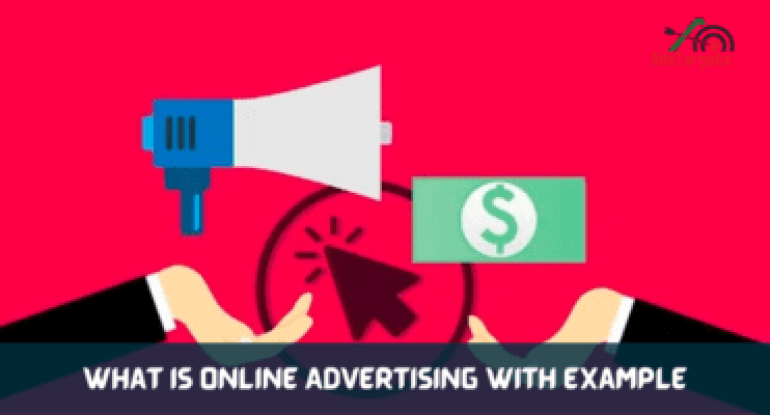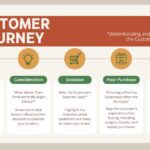When you start your business, it is only natural to want to get customers as quickly as possible. However, there is a lot more to attracting customers than just opening the doors and waiting for them to walk in.
Getting customers can take years of hard work and dedication put into marketing campaigns.
To get customers, you need a plan that will help you reach out to potential customers and make them aware of the product you have to offer.
Online advertising for businesses provides many benefits that help businesses boost their customer base. It allows businesses to reach a wider market than traditional forms of advertising, such as radio commercials, television, and or newspaper ads.
Online marketing is also a lot more cost-effective than traditional methods of marketing because it uses less budget and reaches more people with lesser dollars spent per person reached.
Online advertising is one of the most powerful and affordable ways to promote your business. Your social media profiles, website, and online ads are just a few of the places where you can promote your products.
No matter what type of business you run, there are some basic things that you should know before you start investing money in online advertising.
This article will help you learn how to develop an effective plan for getting customers through online advertising as I will be showing inspiring online advertising examples.
Table of Contents
ToggleWhat is Online Advertising?
Online advertising is nothing but digital marketing. It is the practice of leveraging web-based platforms to spread a message about a company’s products to its prospects.
During the pandemic, many offline stores shut were shut down and through that period, there has been an aggressive demand raised for online advertising.
You can easily promote your business now by leveraging the internet.
Online Advertising Examples
#1. Pay-Per-Click Ads

One way to minimize paying for eyeballs that aren’t interested in your product is to leverage pay-per-click advertising.
The way PPC works is that you only pay when a person clicks on your ad. For instance, you might pay 30 cents each time someone clicks on your ad, taking them to your website. You set a budget of $400, and when 1,000 people have clicked on your advert, your ad stops running. If only 500 people click on your ad, you only pay $200.
With 6.3 million searches per minute on Google, you can use Search ads to ensure potential customers notice your brand, consider your offerings and take action into your sales funnel.
For a Search campaign, you will select a goal, like driving traffic to your website or boosting sales or leads.
And with PPC search ads, you will only pay when your ad gets results, like when people click your ad to visit your site or to call your business.
#2. Programmatic Advertising
Programmatic advertising is a way to automatically buy and improve digital campaigns, instead of buying directly from publishers.
It’s designed to displace human negotiations with machine learning and AI optimization. For businesses, programmatic advertising campaigns marry real-time capabilities with user data to create limitless ad ideas.
Capitalizing on users’ website behavior can help you create tailored ads that will resonate with the audience and encourage them to convert.
#3. Buying Google Ads
Get in front of customers when they are searching for businesses like yours on Google Search. If you use Google, you have probably noticed that the first few search results are paid ads.
These ads appear because your search contained words those advertisers “bought” from Google.
If you are a small business looking to reach customers online or boost website traffic and sales, you need to buy Google ads.
Simply put, Google Ads is a form of pay-per-click (PPC) advertising; a service that allows you to create and run ads for your business on Google.
#4. Social Media Platforms

Social media can be an exceptionally effective tool for businesses of all types and sizes. But the actual social channels that you choose can make a big impact on your chances of being successful in your digital marketing campaigns.
There are social media platforms that reach nearly half of the earth’s population. And there are others with a much smaller reach, but more targeted audiences like Twitter, BizSugar, and Flipboard.
Granted 321 million users (Twitter) is not small but compared to other social media platforms such as Instagram and Facebook, it is.
Every business must choose the social media marketing mix that works best for their specific advertising goals and target customers.
However, brands must start with an understanding of the options available amongst the social media channels in the market.
#5. Social Media Influencers
Advertising through influencers allows businesses to promote through someone that a niche community watches, engages with, and trusts.
So, instead of being doubtful of a commercial or social media ad, consumers are trusting that if their influencer of choice loves the product, it means the product is good, and they will too.
The rise of online personalities and celebrities who have large social media followings has created influencer advertising.
You pay an influencer to wear and demonstrate or otherwise share your product with their followers, as marketing consultant Shane Baker writes.
This pay-for-play model of online advertising can be very costly, but can also produce huge results. Depending on the influencer, advertisers pay hundreds of dollars to more than $100,000 for a product mentioned.
#6. Mobile Marketing
This is one of the present online marketing strategies; it is a core component of an overall advertising strategy. Mobile Marketing can be regarded as a marketing strategy that targets people who use mobile devices such as smartphones, tablets, iPhones, and others.
According to Pew research, in the US, 85% of adults owned a mobile phone, as of February 2021.
As such, mobile users are so numerous and active to ignore them would be a missed opportunity for online marketers.
#7. Visual Marketing
Visual marketing is the use of videos, images, and other pieces of multimedia content to strengthen your brand and communicate with your target consumers.
As part of a larger marketing strategy, it allows you to depict certain subjects and concepts that would otherwise be harder to approach by using only text-based approaches.
#8. Personalized Advertising
Personalized marketing is an online advertising strategy that uses data to connect with target customers and existing customers to offer an improved marketing experience.
By collecting and using consumer data, businesses can identify patterns more effectively to target prospects.
Through personalization, marketers can develop and send individualized emails to a specific group with a certain challenge.
Getting a better understanding of your prospect is key to increasing the relevancy of email content.
#9. SEM Advertising
Search engine marketing (SEM) is an online advertising strategy where a business heightens a website’s visibility in search engine results.
It uses paid advertising to ensure brand visibility in search engines. The key characteristics of SEM advertising include:
#1. Utilizes Google Ads: advertisers pay for the results
#2. Utilizes pay-per-click ads: advertisers pay for the clicks received
SEM advertising is beneficial in that it does not limit access to anyone. It heightens website traffic in the short term and captures leads where traffic is generated into the site, and the traffic is converted into paying customers.
However, SEM advertising is beneficial because it has a high conversion level. It is also interruptive, where a user’s space is broken in with content that they may not have subscribed to, and it has an expensive long-term cost because it is only active when paid for.
#10. Display Advertising
Display advertising is a type of online advertising that entails images or videos that appear on specific places like websites or banners.
It combines images, a link, and videos or images connected to a site that provides information on products.
It is beneficial because it depicts close interaction with customers by engaging the user with comment sections and buttons to like or unlike.
It depicts clarity since the ads are easy to notice, clearly define an ideal audience, and heighten brand awareness.
However, display advertising is bad in that it interrupts the internet user’s intent since some of them may not want to see the ads brought to their screens.
It also leads to banner blindness, where it is difficult to direct an ad to the target consumer.

#11. Retargeted Ads
Retargeted online advertising is a form of digital advertising served to individuals that have had previous access to a website.
When a prospect shows interest in a site, the advertiser can retarget that customer by availing the ad on the websites they visit.
Marketers use cookies to serve retargeted ads to users that visit the website. The main characteristics of retargeted ads are that they are tailored, provide for segmentation, and are highly effective as they transform window shoppers into paying customers.
#12. Email Ads
Email online ads are promotions in an email’s inbox regarding particular products. It is a form of online advertising that integrates commercial messages shared with users or entities using email addresses.
Email ads are characterized by defined objectives, are simple to read and interact with, include error-free content, and are more than just marketing campaigns.
Email ads are valuable because they are cost-friendly, reach a very wide range of people within a short period, and make it easy to track marketing campaigns.
Conclusion
Online advertising is a powerful way to promote your business and increase revenue. It’s important to understand the different types of online advertising so you can make an informed decision about how best to use them.
In this article, I have outlined 12 effective online advertising examples and I hope you draw out enough inspiration to create powerful online advertising campaigns.








